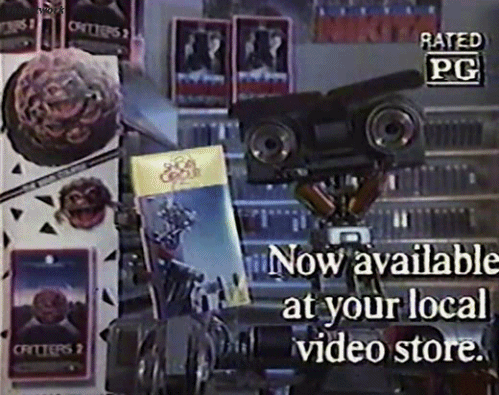Introduction
In software development, documentation is the spinach of coding—vital yet often sidelined. It's the unsung hero, the nutrient-rich foundation that sustains projects and teams. Imagine each software project accompanied by a precise recipe (documentation), guiding developers through code complexities and decisions. Documentation isn't optional garnish; it's as crucial as spinach in a balanced diet, supporting the digital ecosystems we depend on. Like spinach, documentation may not initially excite, but it's essential for growth, clarity, and collaboration in tech.
It shapes the culture of developer teams and organizations by fostering an environment of transparency, learning, and collaboration. Like the roots of a mighty tree, documentation spreads deep and wide, connecting individual efforts to collective achievements and nurturing a community where knowledge is as open as source code itself. This chapter delves into the unsung virtue of documentation—the spinach of software development, if you will—highlighting its pivotal role in cultivating a robust, inclusive, and innovative developer culture.

The Foundation of Developer Culture
At the heart of every thriving developer culture lies a foundation built not of code, but of clear and accessible documentation. Imagine this documentation as the DNA of a software project, encoding the vital information that defines how the system operates, evolves, and interacts with its creators and users. This foundational element is crucial for nurturing a healthy developer environment, akin to a well-tended garden that allows for growth, innovation, and resilience.

Clear documentation acts as a catalyst for team collaboration, serving as a common ground where ideas can be exchanged, and understanding deepened. It's like having a reliable cookbook in a communal kitchen; everyone can contribute their recipes, learn from each other's culinary techniques, and work together to create a feast that's greater than the sum of its parts. This shared repository of knowledge not only facilitates current project work but also paves the way for new members to join the feast with minimal friction.
The relationship between good documentation practices and effective knowledge sharing cannot be overstated. In a world where developer turnover is a reality and project handovers are frequent, documentation ensures that the collective wisdom of the team is not lost but preserved and passed on. It acts as a bridge, connecting the past, present, and future of the project, ensuring that every team member, old and new, has access to the same comprehensive understanding.
Onboarding
Moreover, the role of documentation in the onboarding process is akin to a lighthouse guiding ships safely to shore. New team members can navigate the complexities of the project with ease, thanks to the clear markers and explanations laid out in the documentation. This reduces the learning curve, accelerates productivity, and makes the daunting task of joining a new project much more manageable and welcoming.
In sum, clear, accessible documentation is not just a tool for day-to-day operations; it's the cornerstone of a healthy developer culture that values collaboration, knowledge sharing, and seamless onboarding. By investing in good documentation practices, organizations can build a strong foundation that supports the growth and success of their teams and projects.
Impact of Documentation on Collaboration
Well-maintained documentation is the unsung hero of collaboration in the fast-paced realm of software development. It's like the glue that holds together the pieces of a complex puzzle, allowing everyone to see the big picture and how each piece fits. This environment fosters a sense of unity and purpose, where team members are not just individual contributors but part of a cohesive whole.
Imagine a scenario where two developers are at a crossroads, each believing their approach to solving a problem is the correct one. In such situations, well-maintained documentation serves as the impartial judge, offering a detailed account of why certain decisions were made, the context behind them, and the expected outcomes. It's like having a detailed rulebook during a friendly game of board games, ensuring everyone plays by the same rules and understands the strategies in play. This not only facilitates better teamwork but also resolves conflicts by providing a source of truth that everyone can refer to.
Another anecdote that illustrates the impact of documentation on collaboration involves a team facing a daunting deadline. With the clock ticking, the discovery of a well-documented code snippet from a previous project turned the tide. This snippet, complete with explanations and use cases, was easily adapted to their current needs, saving precious hours and boosting morale. It was a testament to how past efforts, when properly documented, can become the lifeline for present challenges, showcasing the power of shared knowledge and collective effort.
These examples underscore how well-maintained documentation goes beyond mere record-keeping; it actively enhances teamwork, facilitates clear communication, and resolves potential conflicts before they escalate. In essence, it creates a collaborative environment where knowledge is not just shared but multiplied, paving the way for more efficient, harmonious, and successful projects.
Quality and Maintenance of Documentation
Maintaining high-quality documentation is akin to tending a garden; it requires diligence, foresight, and regular care to ensure it flourishes. One of the primary challenges is the documentation drift—the gradual divergence of documentation from the current state of the software as updates and changes accumulate. This can lead to outdated or misleading information, which diminishes the value of the documentation and can frustrate team members relying on it for guidance.
To combat this, one effective strategy is the integration of documentation updates into the development workflow. Just as code is reviewed and tested, documentation should also undergo regular review and revision to ensure accuracy and relevance. This can be facilitated by documentation tools that support version control, allowing changes to be tracked and reviewed with the same rigor as the code itself.

Everyone's Job
Another tip is to foster a culture where documentation is everyone's responsibility, not just that of a dedicated few. Encouraging developers to update documentation as part of their coding process can help ensure that changes in the software are immediately reflected in the documentation. This practice not only keeps the documentation current but also helps inculcate a sense of ownership and pride in the quality of the documentation among the team members.
Leveraging automation can also play a pivotal role in maintaining documentation quality. Tools that automatically generate documentation from code comments or annotations can help reduce the burden on developers and ensure that the documentation stays in sync with the codebase. However, it's important to complement automated documentation with human oversight to capture the nuance and context that automated tools might miss.
Outdated information
Finally, regular documentation audits can help identify areas that are outdated, incomplete, or no longer relevant. These audits, coupled with feedback mechanisms for readers to report errors or suggest improvements, can create a dynamic documentation ecosystem that evolves alongside the software it describes.
By adopting these strategies, teams can overcome the challenges of maintaining high-quality documentation, ensuring it remains a valuable and reliable resource that supports the development process and enhances team collaboration.
Tools and Practices for Effective Documentation
For writing and maintaining effective documentation, the synergy between the right tools and best practices can transform the daunting task into a streamlined process, enhancing both the quality and accessibility of documentation. Among the plethora of tools available, Notion stands out as a versatile platform, favored for its ability to organize documentation in an intuitive, collaborative environment. Its rich feature set supports everything from simple notes to complex databases, making it an excellent choice for teams looking to centralize their knowledge base.
AI for the win
ChatGPT, another innovative tool, has revolutionized the way developers approach documentation. With its ability to understand and generate human-like text, ChatGPT can assist in drafting documentation, explaining complex code, and even generating code comments. This can significantly reduce the time and effort required to create and maintain documentation, allowing developers to focus on their core development tasks.
AI's role in documentation is increasingly pivotal. AI-driven tools can help developers document their changes by automatically generating summaries of code commits or explaining the functionality of undocumented code. This not only ensures that the documentation remains up-to-date but also bridges the gap between complex code and comprehensible documentation. For instance, AI can analyze code changes and suggest updates to relevant documentation sections, ensuring consistency between the codebase and the documentation.

Single source of truth*
In terms of best practices, maintaining a single source of truth is paramount. This means consolidating documentation in a central repository or platform, like Notion, where it can be easily accessed and updated by all team members. Documentation should be treated as a living document, with regular reviews and updates incorporated into the development workflow. Encouraging contributions from all team members and establishing clear guidelines for documentation can also ensure consistency and completeness.
Cool Tools
Interactive documentation is another innovative methodology that has emerged recently. Tools that offer interactive examples, such as Swagger for API documentation, allow users to experiment with API calls directly within the documentation. This hands-on approach can enhance understanding and engagement, making the documentation a more effective learning tool.
Incorporating visual aids, such as diagrams and flowcharts, can also greatly enhance the comprehensibility of documentation. Tools like Lucidchart or Mermaid (which integrates with Markdown) allow teams to create and maintain visual representations of architectures, workflows, or data models, providing a clearer picture of complex systems.
By leveraging these tools and adhering to best practices, teams can create a documentation ecosystem that not only supports the development process but also fosters a culture of knowledge sharing and collaboration.
Conclusion
In conclusion, documentation in software development is not merely an afterthought but a vital component that fuels the engine of innovation. It creates an environment of transparency, collaboration, and learning – akin to the nourishing role of spinach in a diet. By investing in clear and accessible documentation, teams can ensure the smooth functioning of their projects and the growth of their members. Leveraging the right tools and following best practices can greatly enhance the quality and usefulness of documentation, making it a powerful ally in the fast-paced realm of software development. After all, like spinach, documentation may not be the most glamorous part of the job, but its benefits are immense and far-reaching.



